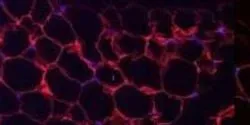Life Science

University of British Columbia scientists have found what could be an important cause of obesity.

Cytation™ 5 is a uniquely integrated, configurable system that combines automated digital widefield microscopy with conventional multi-mode microplate detection to provide phenotypic cellular information and well-based quantitative data.

Stain-free gel chemistry uses a unique compound, which, when activated, reacts with tryptophan residues in the protein sample to emit a fluorescence signal. This allows the quick visualization of proteins without any staining steps. In addition, stain-free gel chemistry makes it possible to use total protein levels as a loading control rather than the housekeeping proteins used in traditional western blotting protocols. This negates the need to strip and reprobe blots and prevents any attendant errors that can be introduced at this step.

A research group at Umeå University has managed to capture and describe a protein structure that, until now, has been impossible to study. The discovery lays the base for developing designed enzymes as catalysts to new chemical reactions for instance in biotechnological applications. The result of the study is published in the journal Nature Communications.

Weizmann Institute scientists develop an “olfactory fingerprint” test that may do more than just identify individuals.















